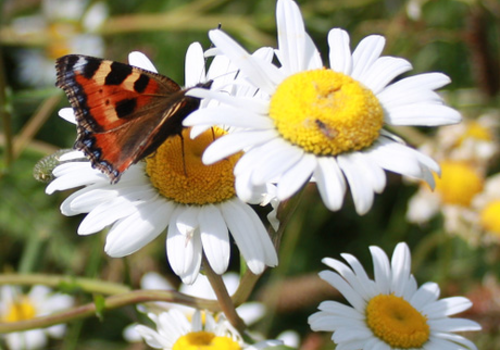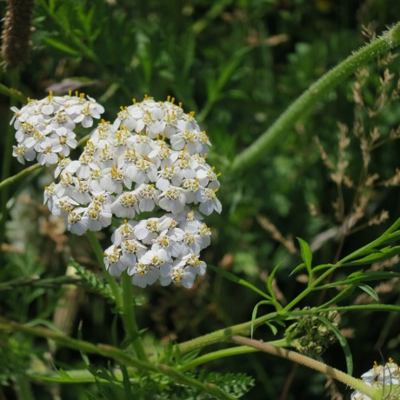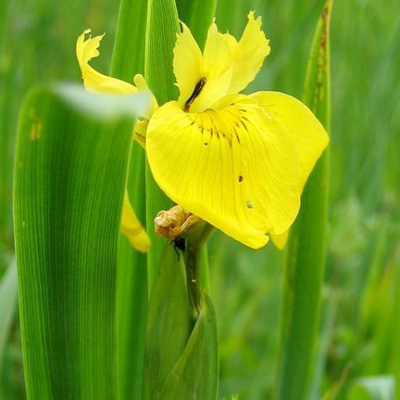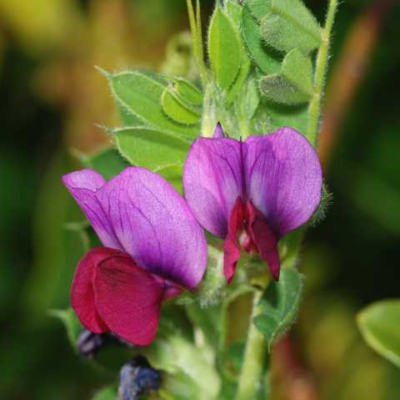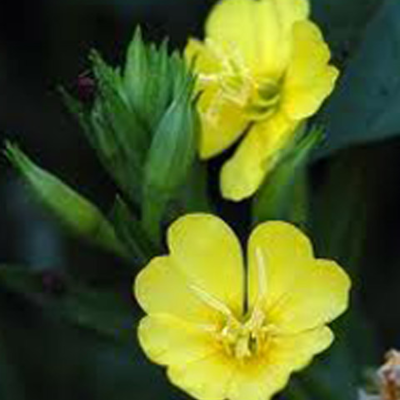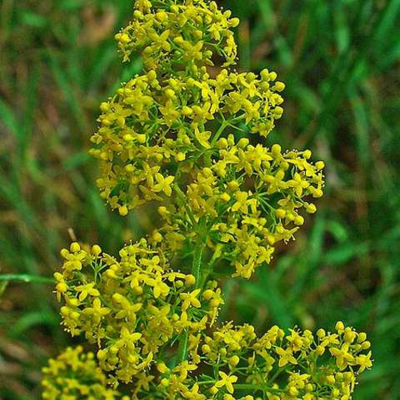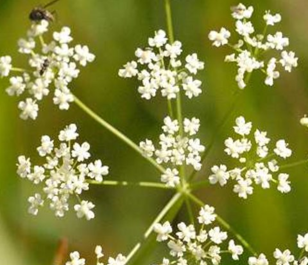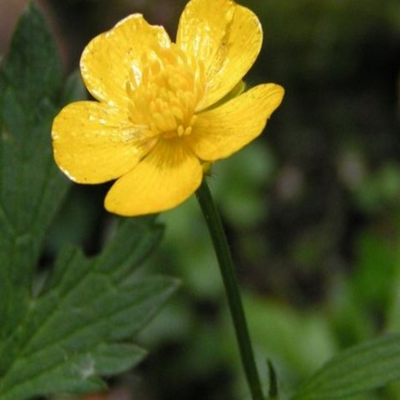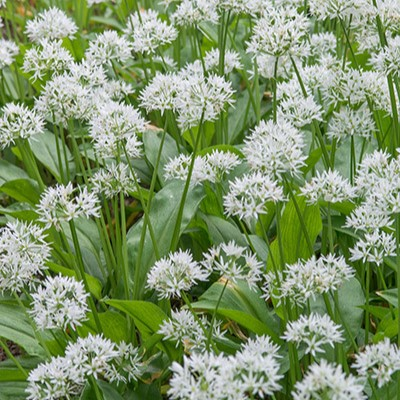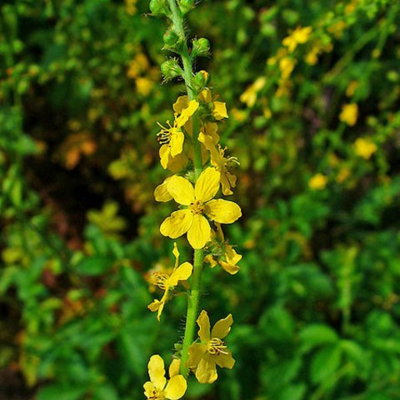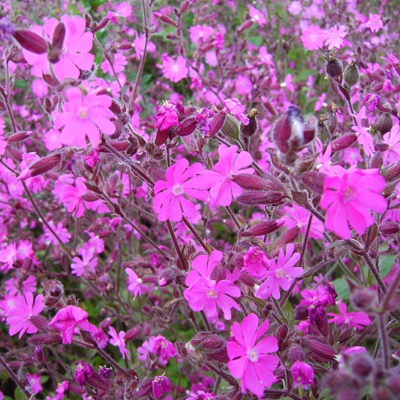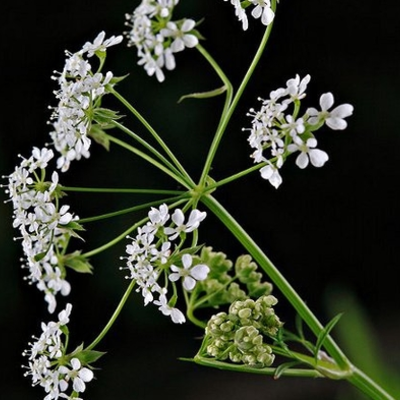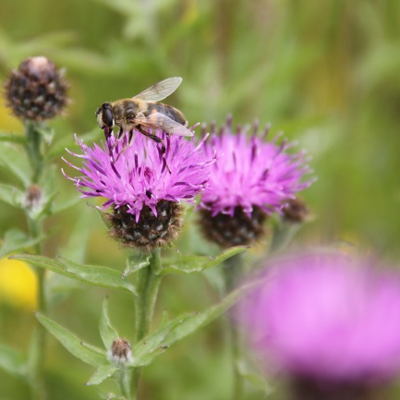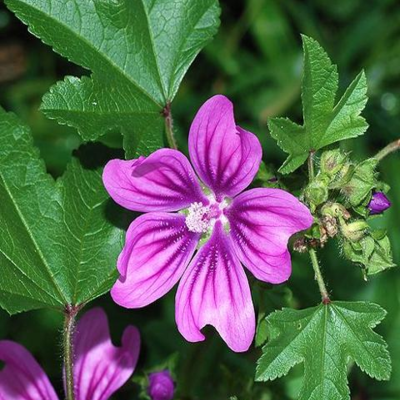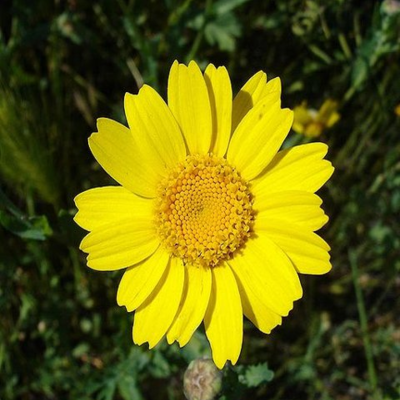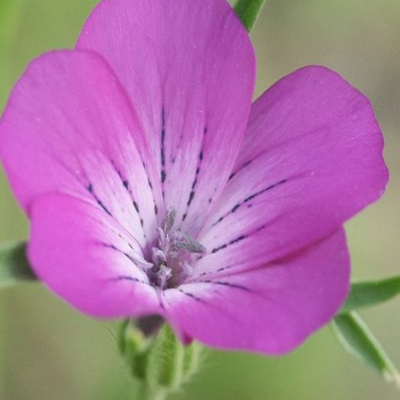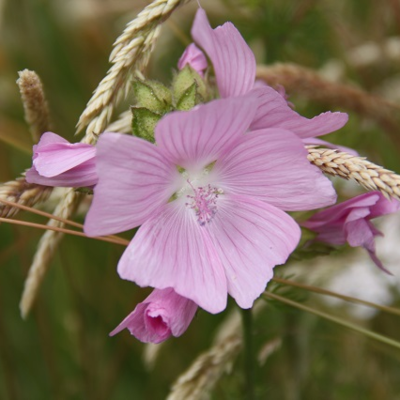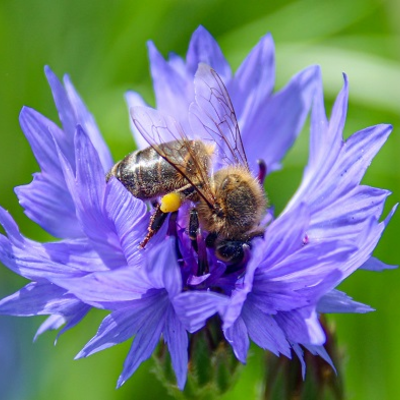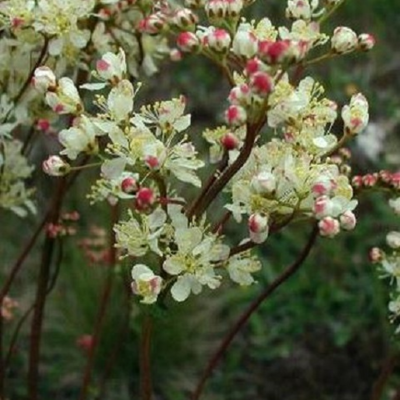Wildflower Seeds A to Z
From Agrimony right the way though to Yellow-rattle, there's a whole host of wildflower seeds you can choose from if a particular look is what you're going for. Each type of wildflower has its own unique set of qualities. Whether you're keen to create a meadow full of sunkissed golden wildflowers with healing properties like that of St John's-wort or you want a wildflower garden that looks pretty in pink when dressed in Greater Knapweed or Purple Loosestrife - we've got you covered.
Don't hesitate to get in touch to speak to one of our experts or request a catalogue to view our full range. Ordering regularly or looking for large volumes? Click here to apply for a trade account today - we review all applications within one working day.
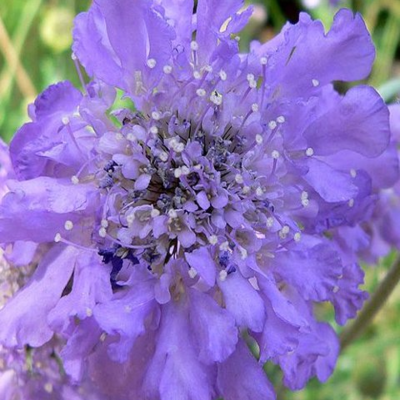

Plants for Pollinators highlights plants selected by the RHS as scientifically proven to tackle the declines in bees, butterflies and other pollinators.
As its name suggests, this smaller scabious specimen still produces the same lovely, lilac petals as the rest of its family, but with five-petalled florets rather than four, a shorter, slender stem and finer foliage. A wonderful wildflower to grow in chalky soil for those who’d prefer the delicate, soft beauty of the scabious in a more controlled garden.
- Type: Perennial
- Height: 60-70cm
- Flowers: July-August
- Best Sown: Autumn or Spring
- Soil Requirement: Well-drained, chalky
- Light Requirement: Full sun
- Natural Habitat: Grasslands, verges
- Also known as: Curl-Doddy, Lilac-Flowered Scabious
- Seeds per gram: 700

Plants for Pollinators highlights plants selected by the RHS as scientifically proven to tackle the declines in bees, butterflies and other pollinators.
This perennial plant has flat heads consisting of White flowers, the leaves are evenly distributed on the plant and have a feather-like appearance. This perennial flower has a strong aromatic presence in meadows and pastures and is loved by bees and pollinators.
- Type: Perennial
- Height: 30-45cm
- Flowers: June-October
- Best Sown: Autumn or Spring
- Soil Requirement: Well-drained
- Light Requirement: Full sun
- Natural Habitat: Grasslands, hedgerows, road verges
- Also known as: Woundwort, Soldier's Woundwort, Devil's Nettle
- Seeds per gram: 6000
This tall-growing iris really does show its beauty off like a flag in the wind! Thin, branching stems make way for buttery yellow, three-petalled flowers and blade-like leaves. A perfect pond-side plant that’s quite water-tolerant, thought by some to be the original fleur-de-lis, a symbol of heraldry and royalty.
- Type: Perennial
- Height: 100-150cm
- Flowers: May-August
- Best Sown: Autumn or Spring
- Soil Requirement: Moist
- Light Requirement: Full sun and partial shade
- Natural Habitat: Marsh, flood planes, ditches
- Also known as: Flagon, Water Flag, Yellow Fleur-De-Lis
- Seeds per gram: 20

Plants for Pollinators highlights plants selected by the RHS as scientifically proven to tackle the declines in bees, butterflies and other pollinators.
There’s a lot to find fetching about the Vetch: its climbing tendrils of foliage carry an earnest and delicate charm, and its two-petalled, pea-like magenta flowers look a little like butterflies! A lovely legume that’s attractive to pollinators, among other animals- it’s commonly used as a plant for livestock.
- Type: Annual
- Height: 45-75cm
- Flowers: June-September
- Best Sown: Autumn
- Soil Requirement: Well-drained
- Light Requirement: Full sun
- Natural Habitat: Grasslands, verges, coastal areas
- Also known as: Fetch, Lintels
- Seeds per gram: 75
The Evening Primrose’s fragrant bell-shaped flowers are welcome in any garden, and grow in shades of yellow, pink and white on tall stems. They’re easy to grow in any soil for those who want a beautiful bloom to light up the summer evenings.
- Type: Biennial
- Height: 100-150cm
- Flowers: June-October
- Best Sown: Spring
- Soil Requirement: Well-drained, sandy
- Light Requirement: Full sun and partial shade
- Natural Habitat: Roadside verges, meadows
- Also known as: Cure-All, Four O’Clock, German Rambion
- Seeds per gram: 2250

Plants for Pollinators highlights plants selected by the RHS as scientifically proven to tackle the declines in bees, butterflies and other pollinators.
Much like its odd title, the ‘Lady’s Bedstraw’ carries riches in a rough-and-tumble manner, bearing vast whorls and clusters of tiny golden flowers. It also boasts a distinct and sweet scent, even when dried. A hardy, sprawling plant that’s sure to make a fine bed for a wild garden.
- Type: Perennial
- Height: 15-30cm
- Flowers: June-September
- Best Sown: Autumn
- Soil Requirement: Well-drained
- Light Requirement: Full sun or partial shade
- Natural Habitat: Grassy meadows, road verges, clifftops and hills
- Also known as: Maiden’s Hair, Fenwort, Cheese Rennet
- Seeds per gram: 1600
A taller-growing, thin-branched plant which produces umbrellas of tiny white flowers. It also has pleasing, varied foliage and eventually bears attractive pink fruit. Hardy, easy to naturalise and is good for attracting pollinators.
- Type: Perennial
- Height: 50-100cm
- Flowers: May-September
- Best Sown: Autumn or Spring
- Soil Requirement: Well-drained, moist
- Light Requirement: Sun and partial shade
- Natural Habitat: Grassland, heathland
- Also known as: Lesser Burnet
- Seeds per gram: 750
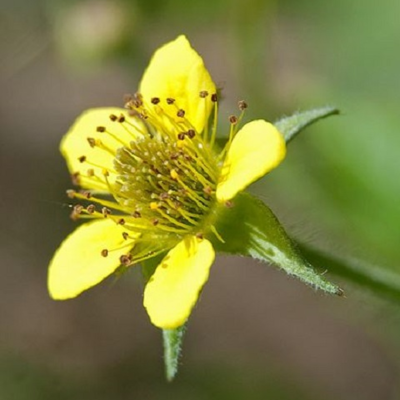

Plants for Pollinators highlights plants selected by the RHS as scientifically proven to tackle the declines in bees, butterflies and other pollinators.
The Wood Avens bears small, nectar-rich yellow flower heads, followed by burr-like seed heads. Once prized for medicinal use by herbalists and named a 'blessed herb', this hardy, leafy plant can still bless your garden with a little sweetness and sunshine in a shady spot.
- Type: Perennial
- Height: 30-60cm
- Flowers: May-August
- Best Sown: Autumn
- Soil Requirement: Well-drained
- Light Requirement: Partial shade
- Natural Habitat: Woods, hedgerows, roadsides
- Also known as: Herb Bennett, Colewort, St. Benedict's Herb, Blessed Herb
- Seeds per gram: 1400
A Perennial Plant that has a yellow, glossy flower that is around 2cm in diameter. The foliage belonging to this plant is much coarser than Meadow Buttercup along with being lower-lying to the ground. The leaves are divided into 3 lobes with fraying edges and a hairy appearance. This plant has long, rooting runners which aid in the spread across an area.
- Type: Perennial
- Height: 30-60cm
- Flowers: May-August
- Best Sown: Autumn or Spring
- Soil Requirement: Damp
- Light Requirement: Full sun and partial shade
- Natural Habitat: Woods, wet-moist meadows, farmland, footpaths, wasteland
- Also known as: Little Frog
- Seeds per gram: 500

Plants for Pollinators highlights plants selected by the RHS as scientifically proven to tackle the declines in bees, butterflies and other pollinators.
A wild perennial herb relative of chives, Wild Garlic (or Ramsons) grow in damp woods, hedges and on shady banks, where its garlicky aroma fills the air. The leaves of this herb are in fact very commonly found in salads or used to flavour meat dishes and sauces. Excellent plant for ground cover in a wet corner of the garden.
- Type: Perennial
- Height: 30-80cm
- Flowers: April-June
- Best Sown: Autumn or Spring
- Soil Requirement: Well-drained
- Light Requirement: Full and partial shade
- Natural Habitat: Woodland, hedgerows
- Also known as: Ramson, Broad-leaved Garlic, Bear's Garlic
- Seeds per gram: 180

Plants for Pollinators highlights plants selected by the RHS as scientifically proven to tackle the declines in bees, butterflies and other pollinators.
Common Agrimony is an attractive, medium-height meadow plant. Its yellow flowers on tall spires are ideally placed for bees and a number of species of wild birds. Steeped in British folklore, legend has it that placing a common agrimony flower under one's head will cause them to sleep until it is taken away.
- Type: Perennial
- Height: 40-80cm
- Flowers: June-September
- Best Sown: Autumn
- Soil Requirement: Well-drained, neutral
- Light Requirement: Full sun or partial shade
- Natural Habitat: Southern UK, grassland, meadows, roadsides
- Also known as: Church Steeples, Sticklewort, Aaron's Rod, Clot-Bur, Fairy's Wand, Money-In-Both-Pockets, Salt-And-Pepper, Sweethearts
- Seeds per gram: 60
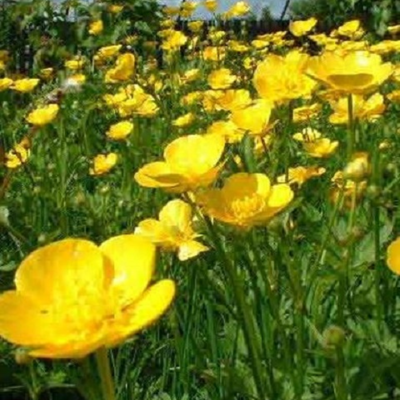

Plants for Pollinators highlights plants selected by the RHS as scientifically proven to tackle the declines in bees, butterflies and other pollinators.
A Perennial Plant commonly found in meadows and pastures. The tallest and most graceful of all the buttercups. The yellow flowers are split into 5 petals. The leaves have a rounded appearance and are split into between 3 to 7 lobes. The Meadow Buttercup does not possess the runners that the creeping buttercup does.
- Type: Perennial
- Height: 30-90cm
- Flowers: May-August
- Soil Requirement: Damp
- Light Requirement: Full sun
- Natural Habitat: Woodland edges, grasslands, meadows
- Also known as: Tall Buttercup, Common Buttercup, Giant Buttercup
- Seeds per gram: 600
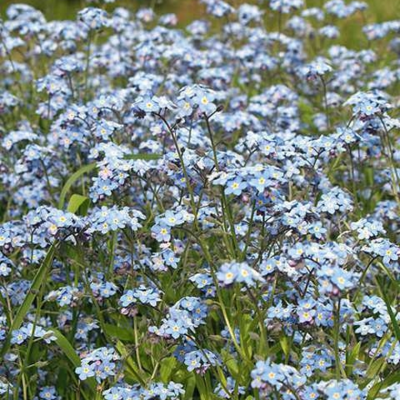

Plants for Pollinators highlights plants selected by the RHS as scientifically proven to tackle the declines in bees, butterflies and other pollinators.
There is something strangely unforgettable about this flower’s simple-but-unique tiny, baby-blue blooms with rare bursts of pink, and silvery foliage. They’re also perfect for pollinators, and have a knack for self-seeding.
- Type: Annual
- Height: 7-25cm
- Flowers: April-October
- Best Sown: Autumn
- Soil Requirement: Well-drained
- Light Requirement: Full sun
- Natural Habitat: Road-sides, dry grasslands
- Also known as: Blue Mouse-Ear, Scorpion Grass
- Seeds per gram: 4000
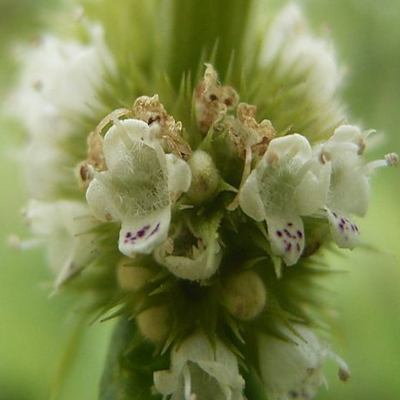

Plants for Pollinators highlights plants selected by the RHS as scientifically proven to tackle the declines in bees, butterflies and other pollinators.
A wetland plant with densely-packed miniature white flowers, dotted with red. Growing tall with distinct toothy leaves, it’s an excellent pond plant that also attracts pollinators.
- Type: Perennial
- Height: 50-100cm
- Flowers: July-September
- Best Sown: Autumn or Spring
- Soil Requirement: Moist
- Light Requirement: Full sun and partial shade
- Natural Habitat: River banks, stream sides
- Also known as: Bugleweed
- Seeds per gram: 4000

Plants for Pollinators highlights plants selected by the RHS as scientifically proven to tackle the declines in bees, butterflies and other pollinators.
In spite of its name, the Red Campion boasts eye-catching pink petals that make a welcome splash of colour in a shady spot. In mythology, they were a favourite of fairies, and in your garden they’re highly attractive to bees. Flowers shortly after the bluebell- planting them together can create a hedgerow of pink-and-blue eye candy.
- Type: Perennial
- Height: 30-60cm
- Flowers: April-September
- Best Sown: Autumn
- Soil Requirement: Well-drained
- Light Requirement: Partial shade
- Natural Habitat: Hedgerows, woodlands
- Also known as: Hare’s Eye, Ragged Jack, Adder’s Flower
- Seeds per gram: 800
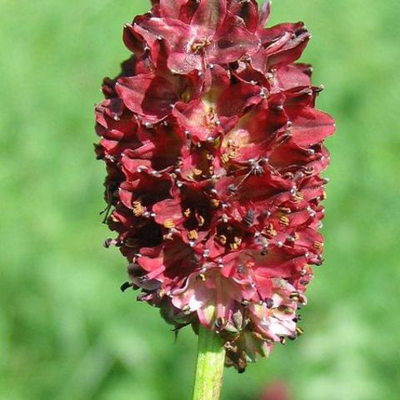

Plants for Pollinators highlights plants selected by the RHS as scientifically proven to tackle the declines in bees, butterflies and other pollinators.
The Great Burnet is a lively-looking plant, sporting crimson flower clusters atop tall, branching stems with distinct jagged leaves. They’re highly attractive to pollinators, and for a good reason; this wild-growing relative of the rose is not to be overlooked!
- Type: Perennial
- Height: 45-90cm
- Flowers: June-September
- Best Sown: Spring or Autumn
- Soil Requirement: Moist but well-drained
- Light Requirement: Full sun and partial shade
- Natural Habitat: Floodplains, meadows, riverbanks
- Also known as: Burnet Bloodwort
- Seeds per gram: 400
A perennial wildflower that grows rapidly during the summer months. Cow Parsley has a hollow stem and grows to be very tall. White umbrella-like flowers that look like lace. Usually found in large clusters on roadside verges, hedgerows and woodland areas.
- Type: Perennial
- Height: 60-90cm
- Flowers: April-June
- Best Sown: Autumn or Spring
- Soil Requirement: Well-drained
- Light Requirement: Partial shade
- Natural Habitat: Hedgerows and woodland edges
- Also known as: Queen Anne's Lace, Lady's Lace
- Seeds per gram: 200

Plants for Pollinators highlights plants selected by the RHS as scientifically proven to tackle the declines in bees, butterflies and other pollinators.
Produces a deep maroon flower head crowned with thistle-like florets of pink and purple, with dashes of a deep reddish-black. Don’t let its prickly appearance fool you- it’s an exceptionally hardy plant, but it has a softer side as a favourite of butterflies and bees!
- Type: Perennial
- Height: 30-60cm
- Flowers: June-September
- Best Sown: Autumn or Spring
- Soil Requirement: Well-drained
- Light Requirement: Full sun and partial shade
- Natural Habitat: Grasslands, forest verges
- Also known as: Bell Weed, Hardhead, Tassel
- Seeds per gram: 500
The mallow is a hearty plant in every sense of the word: it’s able to adapt to a variety of soils and seasons, and bears awfully lovey-dovey heart-shaped pink petals with darker veins. It’s also been prized for its numerous culinary and medicinal uses.
- Type: Annual or Biennial
- Height: 30-90cm
- Flowers: June-September
- Best Sown: Spring
- Soil Requirement: Well-drained, moist
- Light Requirement: Full sun
- Natural Habitat: Meadows, road verges
- Also known as: Cheese Cakes, Marsh Mallow, Round Dock
- Seeds per gram: 150

Plants for Pollinators highlights plants selected by the RHS as scientifically proven to tackle the declines in bees, butterflies and other pollinators.
An exceptionally hardy wildflower which produces golden, daisy-like blooms about 5cm in diameter. It’s also ideal for attracting bees and butterflies, and has been noted to have a pleasant scent.
- Type: Annual
- Height: 15-45cm
- Flowers: June-October
- Best Sown: Spring
- Soil Requirement: Well-drained
- Light Requirement: Full sun
- Natural Habitat: Hedgerows, meadows
- Also known as: Guild Weed, Yellow Daisy, Yellow Ox-Eye
- Seeds per gram: 750

Plants for Pollinators highlights plants selected by the RHS as scientifically proven to tackle the declines in bees, butterflies and other pollinators.
The corncockle’s beauty is almost artistic: magenta petals fading to white, laced with veins of deep purple. Grows tall and proud on soft, silvery stems. What’s not to love?
- Type: Annual
- Height: 60-120cm
- Flowers: June-August
- Best Sown: Spring
- Soil Requirement: Well-drained, sandy
- Light Requirement: Full sun
- Natural Habitat: Grasslands, roadsides
- Also known as: Cat’s Eyes, Kiss-Me-Quick
- Seeds per gram: 80

Plants for Pollinators highlights plants selected by the RHS as scientifically proven to tackle the declines in bees, butterflies and other pollinators.
The Musk Mallow has a lot of ties to love in mythology and the language of flowers- and with its precious pink, heart-shaped petals, it’s not hard to see why. It’s named for its strong, musky aroma which gets stronger in the warmth, making it beloved by bees- and, should you keep it indoors to amplify its scent, you’re sure to fall in love with it too!
- Type: Perennial
- Height: 30-90cm
- Flowers: July-September
- Best Sown: Autumn or Spring
- Soil Requirement: Well-drained
- Light Requirement: Full sun
- Natural Habitat: Hedgerows, meadows
- Also known as: Abelmosk, Ambrette
- Seeds per gram: 500

Plants for Pollinators highlights plants selected by the RHS as scientifically proven to tackle the declines in bees, butterflies and other pollinators.
Famed for its unique and beautiful colour, with perfect pale blue petals tinted with purple in a fluffy formation. This wildflower lends itself to many colour combinations and is highly attractive to pollinators.
- Type: Annual
- Height: 30-60cm
- Flowers: June-August
- Best Sown: Autumn or Spring
- Soil Requirement: Well-drained
- Light Requirement: Full sun
- Natural Habitat: Grasslands, farmland
- Also known as: Bachelor’s Button
- Seeds per gram: 200

Plants for Pollinators highlights plants selected by the RHS as scientifically proven to tackle the declines in bees, butterflies and other pollinators.
The Dropwort produces long, thin branches of delicate pink buds and foamy cream flowers and thin, fern-like leaves. Everything about this plant appears as soft and sweet as its common nickname, ‘Meadowsweet’, and it has a strong scent to match. Plant it alone or with pastel-petalled company in heavier, loamy soil for a supremely sugary spectacle.
- Type: Perennial
- Height: 60-90cm
- Flowers: May-August
- Best Sown: Autumn or Spring
- Soil Requirement: Well-drained, moist
- Light Requirement: Full sun and partial shade
- Natural Habitat: Woodland verges, roadside verges, damp meadows
- Also known as: Lady’s Belt, Little Queen, Meadowsweet
- Seeds per gram: 850
Maybe you're looking for something a little more unusual that's a firm favourite with the bees, in which case an ocean blue garden of Borage is what you need. Or what about the Devil's-bit Scabious? A funky looking plant that isn't half as hellish as it sounds.
All of the wildflower seeds we supply here at Boston Seeds are UK native and many of which are certified as Plants for Pollinators by the Royal Horticultural Society. So, not only will you have the most amazing wildflower garden, you'll being seriously doing your bit for the environment, too.
To learn more about each of the plant varieties we supply, check out our Guide to Wildflower Species here.
Choosing the Right Quantity of Wildflower Seed
Whether you're just looking for wildflower seed for a small patch or land or looking for large quantities for landscape projects we have a wide range of sizes. At Boston seeds you can buy our wildflower seed in multiple sizes including 50g, 100g, 250g, 1kg and 5kg.
Have a question about a particular wildflower? Check out our wildflower seed advice pages for more info.
Buy With Confidence

